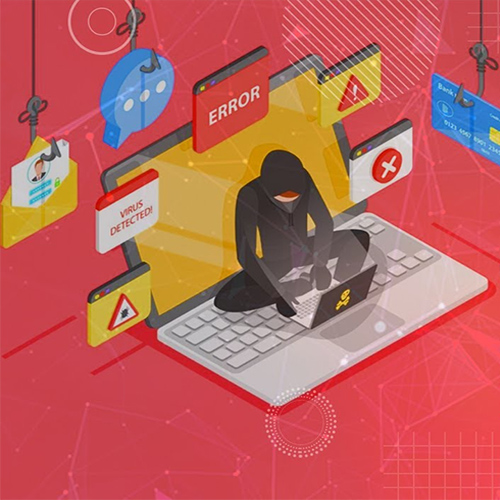Cyberattacks is a major threat
2023-10-21
Cyberattacks are growing at an alarming rate around the nation and are becoming increasingly complex and sophisticated. Cybercriminals are pursuing multi-vector approaches to target enterprises, meaning that they are using a variety of different attack vectors to increase their chances of success. This includes attacks on networks, systems, applications, and people.
It is true that the intruders have found newer and smarter ways of spreading crippling and toxic malware to infiltrate organizations and steal sensitive and confidential data or demand ransom. To top it all, the recent innovations in malware tend to intensively impact enterprises from a resource and computational standpoint. Cryptojacking, for example, installs malware on a device or server to steal computing resources for cryptomining purposes, which in turn performs the same compute-intensive encryption repeatedly.
Cybercriminals are also finding newer and smarter ways to attack and capitalize on the vulnerabilities existing in an enterprise's architecture. This includes exploiting new vulnerabilities, developing new malware, and using social engineering techniques to trick employees into revealing sensitive information or clicking on malicious links.
The rise of cyberattacks is a major threat to enterprises of all sizes. Cyberattacks can cause significant financial losses, damage reputation, and disrupt operations. In some cases, cyberattacks can even lead to the closure of businesses.
IT and security teams must now start by investing in servers and server protection solutions built on the foundation of hardware-based security. This is because the threat landscape is constantly evolving, and attackers are developing new and more sophisticated techniques to exploit vulnerabilities.
The AIIMS, New Delhi attack in India faced a major server-based attack that disrupted the entire operation for 15 critical days. The attack paralyzed five servers in the information technology network by unknown threat actors and encrypted more than 1TB of data, hence affecting the records of nearly 30–40 million patients. The servers were compromised by unknown threat actors originating because of improper network segmentation, which caused operational disruption because of critical applications becoming non-functional.
The variety of malicious attacks is increasing at an alarming rate, and intruders have found newer and smarter ways of spreading crippling and toxic malware to infiltrate organizations and steal sensitive and confidential data or demand ransom. To top it all, the recent innovations in malware tend to intensively impact enterprises from a resource and computational standpoint.
There is need for Hardware-based security which has been limited to elements that reside "below the operating system" in the past. This is because the root of trust capabilities are typically enabled by either OS vendors or computing device platform providers as a necessitating step to improve system integrity.
See What’s Next in Tech With the Fast Forward Newsletter
Tweets From @varindiamag
Nothing to see here - yet
When they Tweet, their Tweets will show up here.





























